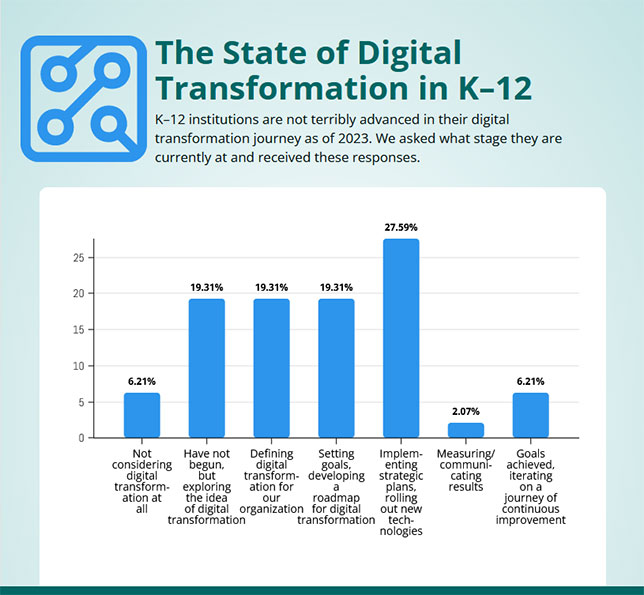The National Council for Teachers of Mathematics is accepting applications through Nov. 1, 2023, for nearly two dozen different grants for primary and secondary educators who teach math, instructional coaches, and leaders.
A survey of nearly 1,000 parents revealed that only a small minority oppose the use of generative AI tools like ChatGPT for academic help in schools.
In a new national survey of more than 1,100 educators, a substantial 64% said they are somewhat or very worried about losing technology resources in the classroom owing to funding cuts.

Digital transformation is still largely in its infancy in K–12 schools and districts. According to the 2023 THE Journal Digital Transformation Survey, nearly two-thirds of respondents said they have not yet begun to implement their strategies or roll out technologies.
A national survey of educators and a survey of parents revealed the top concerns of both groups going into the 2023–2024 school year. Both cited "unfinished learning" from the 2021–2022 school year as one of their major issues.
Four of the top-5 tablet makers saw double-digit declines in shipments in the second quarter of 2023 — including Apple — according to recently released preliminary market data. Meanwhile Chromebooks declined only slightly in the quarter, with the top-2 companies seeing positive gains.
Generative AI technologies such as ChatGPT and Google Bard have cracked the top-10 list of emerging risks for enterprises, according to a new report my market research firm Gartner.
Educational research organization Aurora Institute is calling for the federal government to "let go of the notion that education has to be a linear, time-bound sequence of learning that occurs only within formal education institutions."
In a survey conducted for the Junior Achievement organization in July 2023, of the 1,006 respondents between the ages of 13 and 17 who were polled, nearly half of them said they intend to use AI this fall to do their classwork for them. But most teens consider doing this to be “cheating.”
A recent study conducted by University of California Irvine School of Education associate professor Jade Jenkins, along with other researchers, showed marked positive outcomes for Black and Hispanic disadvantaged children in the fifth grade who had attended pre-K programs. The study has implications for states such as California providing funding for free pre-K attendance.